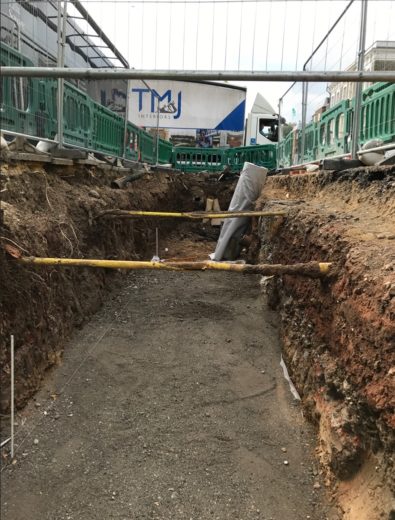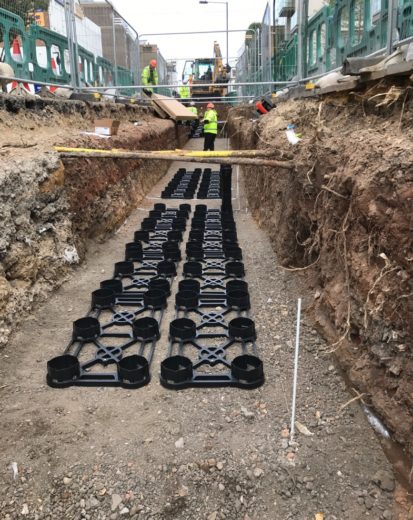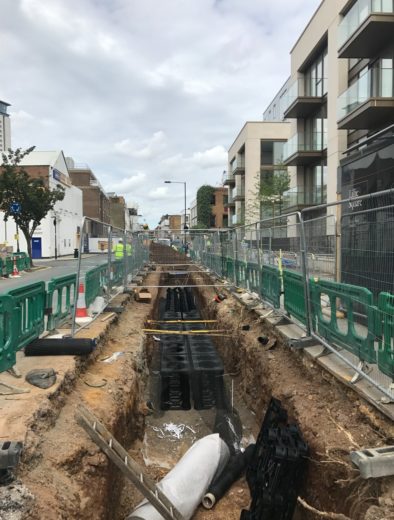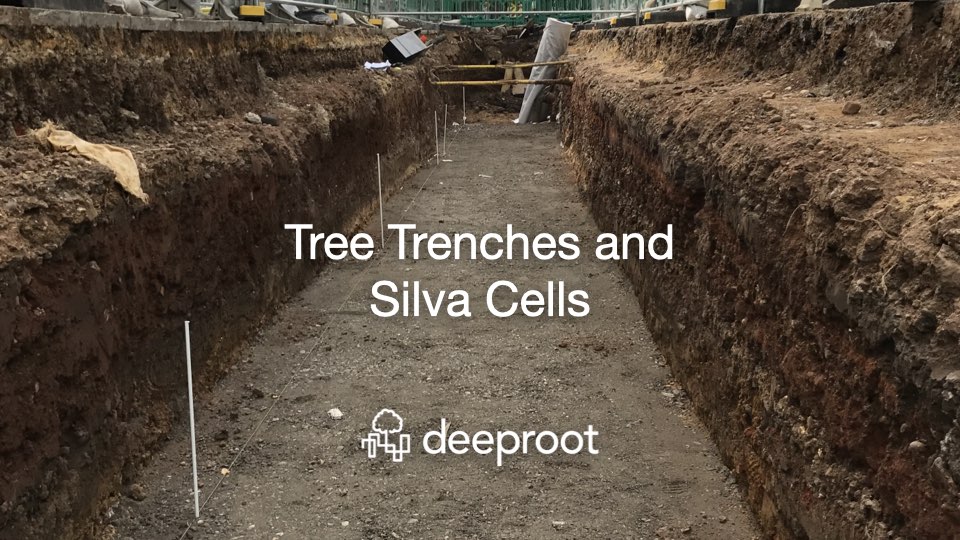Introduction
Planning a green infrastructure project is a complex endeavor with many intricate considerations — not least of which is the seemingly simple question: how will I grow big, healthy trees? Where will I plant them and how will I ensure they thrive in an urban environment? Let’s explore how tree trenches — also called tree pits or tree openings — have a symbiotic relationship with Silva Cells, and how they work together to create ideal conditions for successful urban tree growth.

What Are Tree Trenches?
Simply put, tree trenches are the fixed area beneath the surface in which a tree is planted. In an urban environment, successful tree trenches serve as a stormwater or bioretention tool to help manage rain runoff and provide healthy soil conditions for thriving trees.
Urban tree trenches, however, are not always properly administered. Trenches are often lengthy boxes enclosed with concrete: a perfect formula for ensuring a tree’s premature death. Likewise, not all trenches meet adequate soil volume standards — perhaps the most important factor in the success or failure of a tree.
Take the original New York City enhanced bioswale tree pits, for instance. Much of the trench’s area was taken up by a storage tank system, space that might otherwise be used for a healthy bioretention soil mix that could sustain the trees while also delivering water quality and quantity benefits. New York City has since moved on from this design, but with little increase in soil volume aside from the space created by the tank’s removal.
Indeed, many municipalities are realizing the importance of uncompacted soil volume and have instituted street tree soil volume mandates for all new urban core development. The challenge of meeting these standards in the densest built environments — while also addressing stormwater management (SWM) within the shared public right of way — often requires assistance.
Enter the DeepRoot Silva Cell system.


Silva Cells Help Optimize Urban Tree Trench Performance
As more and more cities adopt soil volume requirements, the integration of soil cell systems into green infrastructure (GI) project planning is becoming commonplace.
The city of Vancouver, for instance, has incorporated soil cells into their design guidelines and objectives: “Using structural soil or soil cells, the city is able to expand and ameliorate a tree’s ability to form a healthy and thriving root system while also maintaining the necessary structural load requirements of roads and sidewalks.”
In other words, by utilizing a system like the DeepRoot Silva Cell, trees are afforded optimal conditions for healthy root growth while also serving as a load-bearing foundation for the above-ground surfaces. Silva Cells significantly improve tree trench designs because they add all the required components for stormwater management — from bioretention media to ponding depth or aggregate storage — under the pavement. Field-scale viability of the Silva Cells in a stormwater management application are also academically proven, illustrating the hydrologic and pollutant-removal capabilities of these systems to manage urban stormwater runoff to have the same stormwater volume and water-quality benefits as traditional SWM measures. Augmenting tree trenches with Silva Cells is a great example of multifunctional GI.
For examples of Silva Cells success in tree trench optimization, check out the following projects:






Leave Your Comment